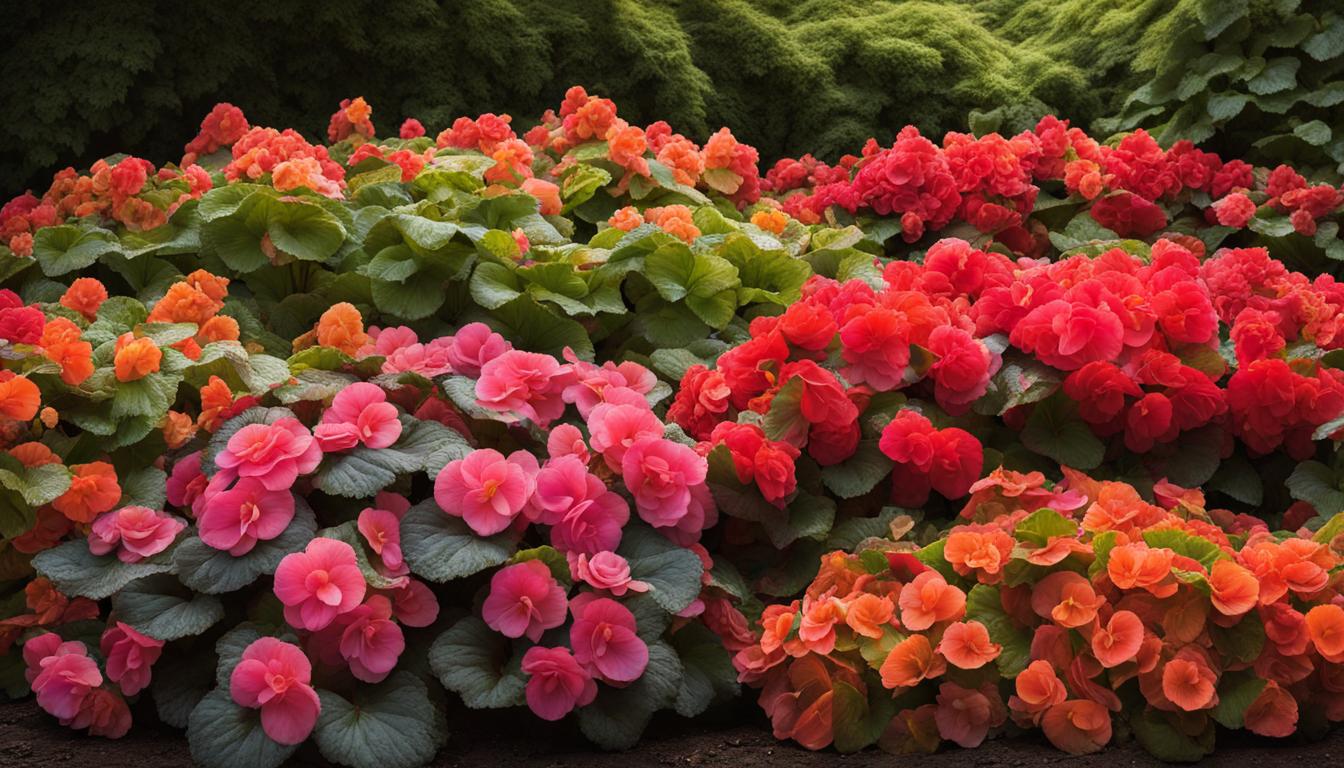
Welcome to an enchanting world of indoor plants, where the begonia takes center stage. With its captivating foliage and vibrant blooms, the begonia, belonging to the Begoniaceae family, is a true gem among ornamental plants.
In this article, I will delve into the secrets of begonia growth, revealing the wonders of this diverse and resilient plant family.
Begonias are renowned for their stunning foliage and dazzling flowers, making them a favorite choice for both gardening enthusiasts and indoor plant lovers.
With over 2,000 known species, begonias offer an extensive array of shapes, colors, and forms. From the show-stopping blossoms of tuberous begonias to the intricate patterns of rex begonias, there is a begonia variety to suit every taste and space.
To thrive, begonias require bright but indirect light, making them ideal for indoor spaces or shaded areas in your garden. They prefer slightly moist soil and benefit from well-draining soil enriched with organic matter.
If you’re a gardening enthusiast, you’ll be delighted to know that begonias can be easily propagated through stem or leaf cuttings, as well as division.
Join me as we explore the captivating world of begonias and uncover the secrets to their beauty and growth. From choosing the perfect begonia variety for your garden to providing the optimal care and conditions, this article will equip you with the knowledge to cultivate and cherish these extraordinary plants.
Choosing the Perfect Begonia for Your Garden
When it comes to choosing the perfect begonia for your garden, there are several popular varieties to consider. Tuberous begonias are admired for their show-stopping blossoms and come in a variety of vibrant colors such as red, pink, orange, yellow, and white.
They thrive in shaded or partially shaded areas and are perfect for enhancing garden beds, containers, or hanging baskets.
Rex begonias, on the other hand, are treasured for their remarkable foliage, which showcases a captivating blend of colors, patterns, and textures. They are predominantly cultivated for their foliage and make exquisite additions to indoor spaces.
Rhizomatous begonias offer a diverse range of leaf shapes, sizes, and patterns, and are known for their resilience and adaptability. These begonias can thrive in both indoor and outdoor settings and are popular among plant enthusiasts of all levels.
Rex Begonias
| Variety | Leaf Colors | Leaf Patterns |
|---|---|---|
| Tilda | Green, Silver, Purple | Spotted, Veined |
| Sophie | Red, Pink, Green | Ruffled, Spiral |
| Oliver | Burgundy, Bronze | Splashed, Laced |
Whether you’re drawn to the vibrant flowers of tuberous begonias, the intricate foliage of rex begonias, or the versatility of rhizomatous begonias, there is a perfect begonia variety for every garden.
Choose the one that best suits your preferences, gardening style, and growing conditions, and enjoy the beauty and charm these ornamental plants bring to your outdoor oasis.
Tips for Growing and Caring for Begonias
As a plant enthusiast, I have learned some valuable tips for growing and caring for begonias. These stunning plants can thrive both indoors and outdoors, and with the right care, they will reward you with their beauty and vibrancy.
Begonias prefer bright but indirect light, so it’s essential to find a spot that provides them with the ideal lighting conditions. For outdoor begonias, choose shaded or partially shaded areas, while indoor begonias will thrive near a window with filtered sunlight.
Proper watering is crucial for begonias. They prefer slightly moist soil, but overwatering can be detrimental. Allow the soil to partially dry between waterings to prevent root rot. To maintain moderate humidity, you can place a tray of water near your begonias or invest in a room humidifier.
When it comes to soil, begonias need well-draining soil enriched with organic matter. This will ensure good drainage and provide the necessary nutrients for healthy growth.
Fertilize your begonias regularly with a balanced, water-soluble fertilizer during the active growth period to support robust growth and abundant blooms.
Propagation of begonias
If you want to expand your begonia collection or share these beautiful plants with friends, you can easily propagate them. Stem cuttings, leaf cuttings, and division are effective methods for propagating begonias.
With a sharp, clean knife or scissors, carefully take cuttings or separate the plant into smaller sections. Place them in a suitable growing medium, keep them moist, and provide them with the same care as mature begonias.
By following these tips and providing the right care, you can enjoy the beauty of begonias in both your indoor and outdoor spaces.
Remember that each begonia variety may have specific care requirements, so it’s important to research and understand the needs of your chosen species. With a little attention and love, your begonias will thrive and bring joy to your gardening endeavors.
FAQ
What is the Begoniaceae family known for?
The Begoniaceae family is known for its mostly monoecious herbs or shrubs with succulent stems and leaves that can be simple or palmately lobed. They have roots ranging from tuberous to fibrous.
How do the flowers of begonias typically differ?
The flowers of begonias are typically unisexual, with male flowers having valvate tepals and female flowers having imbricate tepals.
What are the characteristics of the ovary in begonias?
The ovary in begonias is usually inferior or half-inferior and winged, with 2-3 carpels and locules.
How many known species of begonias are there?
There are over 2,000 known species of begonias, originating in tropical and subtropical regions.
What are some popular varieties of begonias?
Some popular varieties of begonias include tuberous begonias with their show-stopping blossoms, rex begonias with their striking foliage patterns, and rhizomatous begonias with their resilience and adaptability.
How do begonias thrive?
Begonias thrive in bright but indirect light, prefer slightly moist soil, and benefit from well-draining soil enriched with organic matter.
How can begonias be propagated?
Begonias can be propagated through stem or leaf cuttings, as well as division.
What are the specific care requirements for begonias?
Begonias thrive in bright but indirect light, prefer slightly moist soil, and benefit from well-draining soil enriched with organic matter. They should be fertilized regularly during the active growth period and require moderate humidity levels.

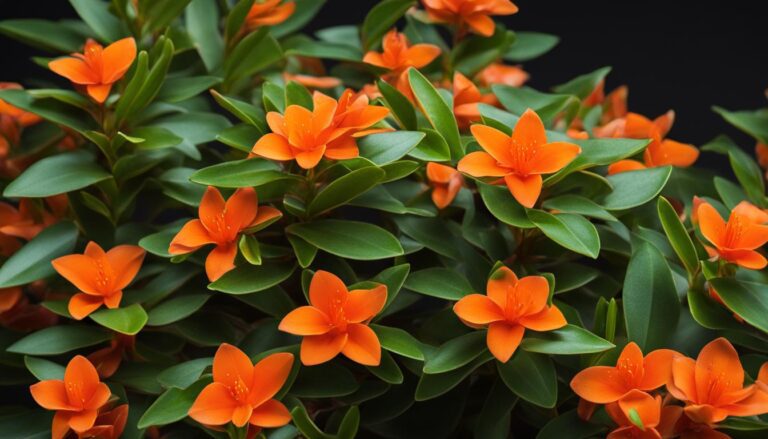
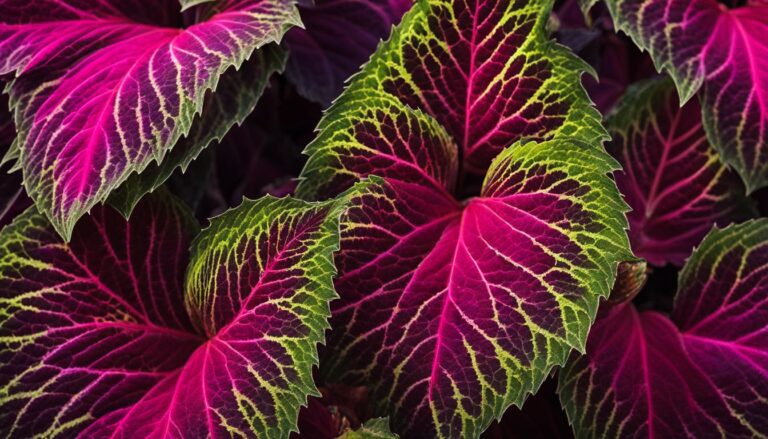
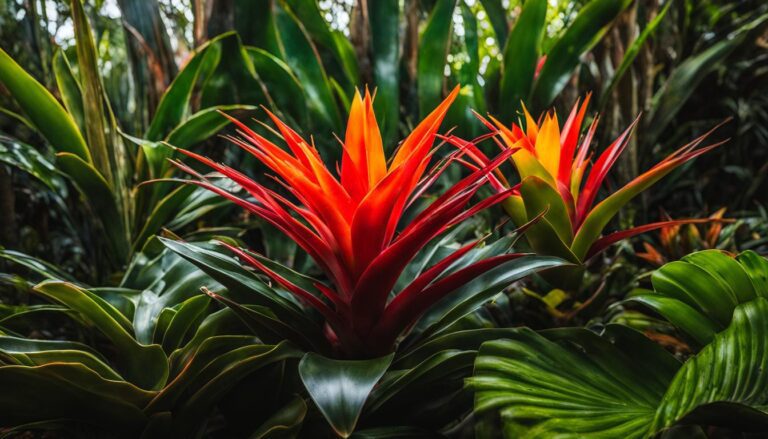
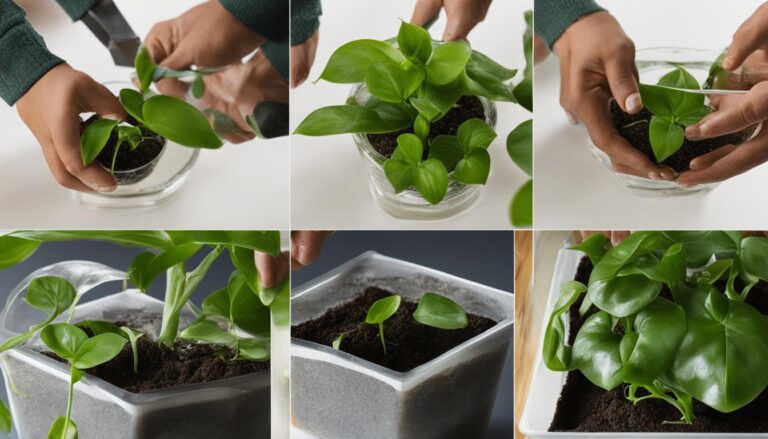


One Comment